Reviews
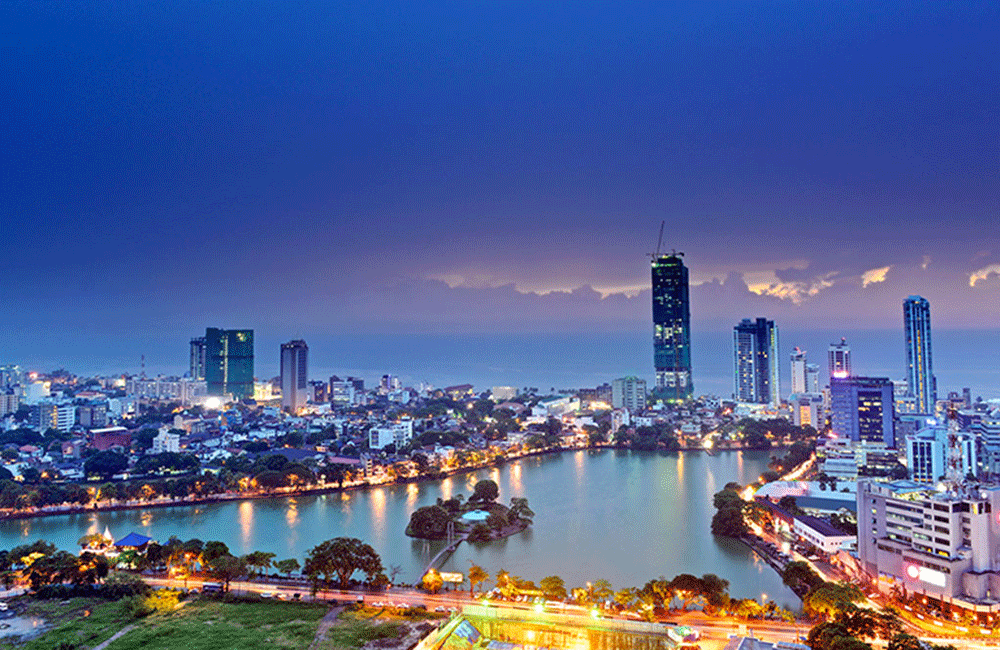
Stability reigns but Sri Lanka might stay in chains
By Dushni Weerakoon
Strong macro-stabilisation efforts characterised Sri Lanka’s economic policy in 2017. After two years of budgetary turmoil, fiscal consolidation efforts under an ongoing IMF program are delivering higher revenues for the cash-strapped Treasury. A stronger fiscal footing is allowing Sri Lanka’s central bank to act pragmatically in its fight against inflation.
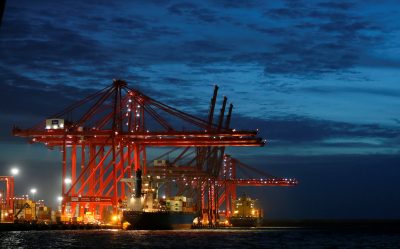
As the macroeconomic fundamentals improve, so too does Sri Lanka’s performance in two pressing areas: export earnings and foreign direct investment inflows. Export earnings were up by nearly 9 per cent in the first 10 months of 2017 compared to a contraction of 2.5 per cent over the same period in 2016. Foreign direct investment inflows in the first nine months of 2017 stand at US$766 million compared to a low US$397 million over the same period in 2016.
The economy is faltering on the growth front. GDP growth fell to a low 3.3 per cent in the third quarter of 2017. This suggests that annualised growth will hover around 4 per cent — a steady decline from the 5 per cent GDP growth achieved in 2014. The drop was partly due to harsh weather that devastated agriculture (a sector that generates 7 per cent of total GDP). The other part of the growth slowdown came from Sri Lanka’s contractionary fiscal consolidation efforts under the IMF program. Higher taxes on consumption and production constrained both household disposable incomes and corporate profits.
The need for strong fiscal consolidation is apparent. Sri Lanka’s accumulated debt overhang was considerable by the end of 2014. At that time, net external debt exposure totalled US$22.9 billion and expanded further to total US$24.8 billion at the end of 2016. Indeed, Sri Lanka’s most critical medium-term challenge is a bunching up of its external debt service payments during 2019–2022. The risks of refinancing large volumes of sovereign bonds remain high. Better management of public finances and evidence of sound macroeconomic policy are both vital to retain investor appetite for Sri Lanka’s sovereign bonds.
To add weight to the above, the government finally set out its economic direction for the country in September 2017 under its Vision 2025: A Country Enriched policy framework. At its core, the policy aims to position Sri Lanka as a competitive, knowledge-based economic hub at the centre of the Indian Ocean. This entails a transformational shift in ambition to tackle deeply-rooted structural constraints on growth while maintaining a stable macroeconomic outlook. The first step towards this was taken in the government’s November 2018 budget, which outlined commitments to liberalise sectors such as shipping and logistics. This signalled the government’s intention to position Sri Lanka as a regional goods and services hub.
After initial missteps in managing public finances, dispelling policy confusion and establishing prudent leadership at key economic agencies, the Sri Lankan economy appears to be turning a corner at long last. Stronger macroeconomic fundamentals and a clear commitment to reform can entice private investment and propel a medium-term economic take off.
The primary risk Sri Lanka faces is the interaction of economics and politics. Sri Lanka’s local and provincial elections have been delayed since 2015 due to a web of electoral reforms. Local government elections in February 2018 will be the ruling coalition’s first test of electoral popularity. Once these elections kick off, the cycle of these electoral ‘tests’ for the government will only end with the next presidential elections, which are set for early 2020.
A mid-term reform push is hard even without this slew of local elections. The adjustment costs of fiscal reforms have already hit ordinary voters in the form of higher prices whereas the gains from structural reforms will likely manifest after the current term of office. A reform push is trickier again since Sri Lanka is already on a low growth trajectory amid a tight fiscal austerity program.
The politics are also daunting. The elections will test the apparent political stability of the ‘unity government’ in the coming months as the ruling coalition parties plan on contesting separately. Just when Sri Lanka’s investment climate begins to seem more promising, electoral volatility in the lead up to the 2020 presidential elections could deter investors from cashing in immediately.
Sri Lanka will enter a critical phase of its economic reforms in 2018. In order to reap the full benefits of macroeconomic stability, the government should balance some quick policy fixes with deeper reforms. A number of important reforms may be too complex to implement in any meaningful fashion at this time, such as tackling loss-making state-owned enterprises or increasing labour market flexibility. A selective approach that offers easy, quick fixes to cut down red tape and bureaucracy will allow tangible gains to keep coming. If appropriately managed and implemented, these much-needed economic reforms can help Sri Lanka become ‘a country enriched’.
Dushni Weerakoon is the Executive Director and Head of Macroeconomic Policy Research at the Institute of Policy Studies of Sri Lanka.
This article is part of an East AsiaForum's special feature series on 2017 in review and the year ahead.
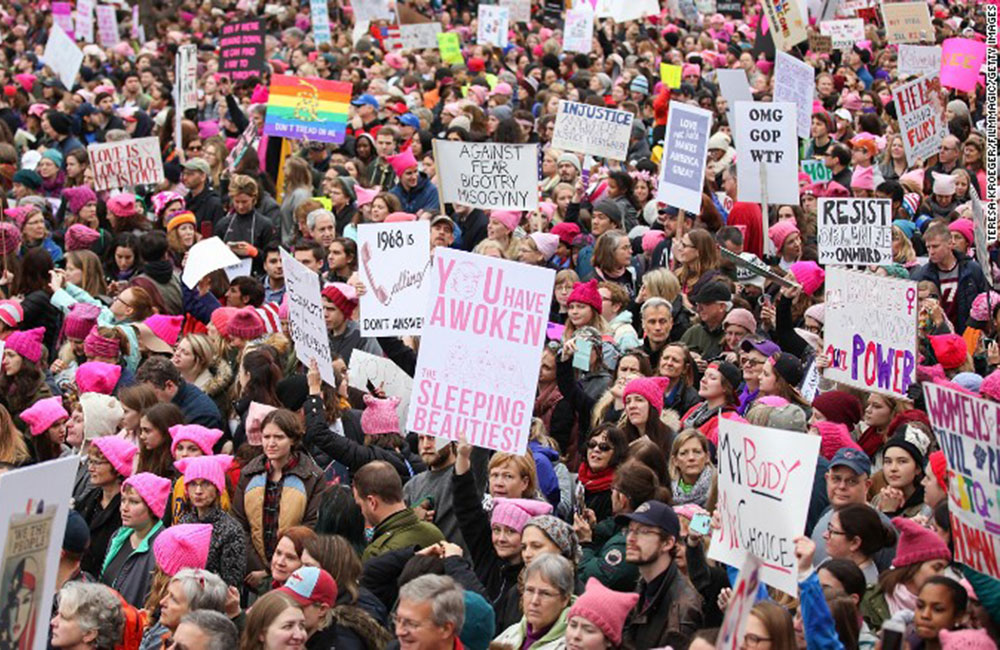
2018 will be the year of women
By Marianne Schnall
Source: CNN
2017 has been a turbulent and trying year for women.
Beginning with the inauguration of Donald Trump, the year saw an escalation of the Republican Party's attacks on women, including efforts to defund Planned Parenthood, undermine women's legal and reproductive rights and slash essential health benefits.
There were also threats to issues women care about: protections for children, civil rights and the environment, just to name a few. And then came the explosive epidemic of reports of sexual harassment and assault, exposing just how pervasive this problem is for women in all sectors of society.
With all that has happened, it's been hard for many women -- and men -- not to feel overwhelmed and discouraged.
And yet... there is an upside: women are rising.
In response to these attempts to diminish our power and silence our voices, women are harnessing their outrage. They are more engaged, energized and resolute than ever. Issues that were long ignored are finally coming to the surface, and women are beginning to speak up and use their voices and influence to demand real change.
As New York Sen. Kirsten Gillibrand, the founder of Off the Sidelines, put it to me: "One of the only silver linings of the Trump presidency is that more and more women are feeling emboldened to raise their voices and fight for the issues that matter most to them, from sexual harassment in the workplace to paid leave. We saw that with the Women's March, and we saw it again on Election Day last month, when women all over the country got off the sidelines, ran for office, and won." (Editor's note: the author's daughter has interned for the senator.)
This fire now burning in women explains why, even after such a rough year, we have reason to hope. I'd like to offer these reasons to be optimistic about what 2018 has in store -- to remind us that we are living in a watershed moment in our history, one we can broaden and deepen. A transformative moment.
1. Women everywhere are rising up, taking the women's movement into the mainstream.
Women are protesting, marching, organizing and building power. From the millions who joined the Women's March to the survivors who have bravely come forward with their stories of sexual harassment and assault, to the millions participating in the #MeToo movement, it's become clear that women are not going to stay silent anymore. And these "silence breakers" -- named as Time magazine's "Person of the Year" -- are not only speaking out but are being heard.
The "women's movement" has been swept into the mainstream and become more diverse, and social media has become increasingly effective at mobilizing younger generations of women and girls.
At the same time, men are becoming more vocal and aware of gender issues and finding ways to be active as allies. And, this week, the word "feminism" was named as Merriam-Webster's word of the year: It was the year's most-searched word on the dictionary's website.
As California Congresswoman Maxine Waters, who has been one of the most outspoken advocates of this new "resistance" told me, "When I spoke at the historic Women's March in January, I was extremely inspired and encouraged. Following the election of Donald Trump -- a man who had defined himself as having no respect for women and who was prepared to use his office to turn back the clock on the progress that had been achieved by the women's movement, the civil rights movement, and the LGBTQ movement -- a very diverse group of women organized the Women's March, which brought together thousands of women from all ages, ethnicities, religions, and walks of life, who showed up and gained the type of attention for our concerns that we haven't seen in many years.
She continued: "Since the march, I have been very pleased by the leadership and participation of younger generations of women, particularly the millennials, who are continuing what was started in January and are running for office at record levels, organizing their communities, and, as we have seen with #MeToo, are boldly speaking truth to power in order to fight for the change we so desperately need in this country. This is what the 'resistance' is all about, and these signs help me continue to be hopeful during this very tumultuous and chaotic period in our country."
2. Women's political power is growing.
Women are running for office in record numbers, there has been a dramatic increase of women donors funding campaigns, and more and more strong women leaders are emerging. Parity for women in politics is being rightfully reframed as an essential component of a reflective democracy, and the need for women's input and voices in government has never been more clear.
Emily's List, an organization devoted to electing female candidates, has reported a huge surge in women interested in running for office, with more than 22,000 women contacting the organization since Trump was elected. Other groups offering training programs for women report similar increases and also note the trends of a more diverse and younger cohort of women candidates.
This November, one year out from Election Day 2018, the number of female House and Senate candidates was nearly double the number at the same point in 2016, according to data from the Center for American Women and Politics at Rutgers. The recent November election results offered promising wins for women and diversity, with cities across the country electing their first women, minority and/or transgender candidates into public office.
Changes to the political landscape are further exemplified by the mobilization of black women voters as a decisive influence in the US Senate race out of Alabama on Tuesday.
Emily's List President Stephanie Schriock encourages all women to get involved politically in any way they can: "My call to everybody is to get engaged now. And the way that we really make it happen, coast to coast, in every state, is by getting involved, whether it's a local race, whether you're running or you're backing somebody up. Democracy is not something you just sit on the sidelines of -- you actually have to get involved, roll up your sleeves, and help out your sisters in doing this. We can make this happen."
3. Powerful men are being held accountable in cases of sexual harassment and assault.
The world is watching as some of the most powerful and well-known male public figures topple from their pedestals as they face allegations of abusive behaviour. Nearly all are swiftly losing their jobs and their platforms and facing a harsh public backlash.
Corporations and media entities are issuing strong statements and demonstrating zero tolerance for sexual misconduct, and politicians accused of abuse are also being pushed to resign. Reports of Alabama candidate Roy Moore's alleged sexual abuse arguably were responsible for his Senate loss this week, and a growing chorus of lawmakers and others are calling for Donald Trump to resign because of his alleged abuses (CNN has reported that both men deny the allegations).
Eve Ensler, founder of the anti-violence group V-Day -- and playwright of "The Vagina Monologues" -- told me that she recognizes that this moment of reckoning is a good start, but reminds us that we must continue to be proactive: "This could be a tipping point, but a lot has to happen. This tsunami of telling has to translate into concrete irreversible action -- from telling to transformation, from revealing to revolution."
4. And men are a part of this cultural revolution.
As #MeToo becomes the story of the year, many men are freshly reflecting on their own and their colleagues' behavior, and our society appears to be in the beginning of a long-overdue national conversation about the abuse of power and privilege, the socialization of men and boys, the objectification of women and a culture of toxic masculinity.
There is an important reframing underway: these are not "women's issues" -- too long misplaced, trivialized and marginalized as such -- they are human issues that we need to address together.
Ted Bunch, co-founder of A Call To Men, a group that educates men all over the world on healthy, respectful manhood, shared with me his hopes for the transformation this shift could bring: "We hope that men will start to understand that they are the solution. We have an opportunity to educate men about how our collective socialization results in a culture that devalues women and ultimately allows many forms of violence and discrimination to persist and harms all of us."
Although 2017 has been full of obstacles, we can't deny that it has also emboldened women and girls. This is a potential tipping point if we constructively use it and harness this energy. It requires that we all stay vigilant and address the issues we care about.
Sen. Gillibrand told me: "As we head into the new year, my advice to women is this: Don't wait for some white knight in Washington to ride up and save us. You will wait forever. It is the grassroots who will create the message, launch the campaigns, and win the elections that finally change our country for the better."

Real equality is when women have the right to be as drunk and stupid as men
I have done lot of irresponsible things throughout my life.
Youthful transgressions may not be our best moments, but they’re also part of growing up. And let’s face it – a lot of them were really fun too. So I can’t help but be put off by the never ending stream of “advice” thrown at young women about how to be “safe” or “respect ourselves” – advice that boys of the same age never hear.
Equality is about politics and economics ... but it’s also about the ability to be a damn fool every once in a while, if we want to. As Rebecca Traister wrote in Big Girls Don’t Cry, true equality “would involve as many Sarah Palins as it would Hillary Clintons.”
Young women need to be able to move around the world with the same amount of stupid that men do because, if women are held to a higher standard of behavior, and we’re inevitably blamed if – and when – we don’t adhere to it.

Take Caroline Kitchens of the conservative American Enterprise Institute, for example. Kitchens, who previously characterized concern over rape culture as “hysteria”, recently published a video in which she suggests that, if women don’t want to be raped, they shouldn’t get drunk. It’s not a new line of thinking – Slate’s
Emily Yoffe came under fire for writing that the “common denominator” in rapes is alcohol instead of, you know, rapists.
In addition to just being ineffective – women get raped drunk and sober, in skirts and in sweatpants – warnings to avoid alcohol in order to avoid being raped send a clear message to women: you can never make a mistake, or any crime committed against you will be at least partially your fault.
Do we really believe that women shouldn’t have the freedom to get drunk and be stupid? That they can’t partake in the silly, fun, dumb behavior that we’ve come to expect of young people – young men – on the brink of adulthood? That one bad decision and they could “get themselves” raped, but that never making a bad one will protect them?
Do we really believe that only women can stop rapists?
Sure, binge drinking is a problem among young people – and, though men are far more likely to binge drink than women, the rate of women binge drinking has stayed steady as the rate among men declined. No, we should not encourage people to do dangerous things (and there are dangers). But the freedom to have fun, make mistakes and participate in some youthful irresponsibility shouldn’t be limited to men.
And if we spent even a fraction of the time and energy teaching affirmative consent, fighting rape and punishing rapists that we normally squander on chastising women for not being good boring girls, it wouldn’t have to be. Now if you’ll excuse me, I need a drink.
Jessica Valenti

Is there a way to avoid war on the Korean Peninsula?
By Alexander Gillespie
The situation on the Korean Peninsula - with the clear risk of a Third World War - is the most tense and dangerous peace and security issue humanity currently faces. The insanity of this situation is akin to two madmen - "Rocket Man" and "Dotard" as they like to call each other - rapidly accelerating towards one another on a train-track.
As they hurtle towards each other, US President Donald Trump is unequivocal that he will not cancel the war games that are so provocative to North Korean leader Kim Jong-un, while demanding his opponent give up his nuclear arsenal. In reply, Kim shouts he will not talk to Trump while military exercises are being conducted next door, and his country will never give up its nuclear deterrent.
Kim Jong-un is accelerating from one direction, in clear defiance of Trump and the international community with his nuclear and missile tests. His most recent nuclear test,over ten times larger than the one that flattened Hiroshima, has been matched by rapid increases in both the types and capacities of his missiles. This progress is driven by more missile tests during his time than all of the earlier North Korean dictators added together (86 out of all 117 North Korean missile tests were conducted during Kim Jong-un's rule).
Trump is speeding from the other direction. He is conducting military exercises in clear defiance of warnings from both Russia and China that these exercises are, in the eyes of North Korea, becoming increasingly difficult to distinguish from actual attacks. This same problem almost lead to a nuclear war between the US and the Soviet Union in 1983.
The military exercises that caused difficulties for North Korea annually (and may have been instrumental in it creating its own nuclear deterrent), peaked in scale around 1990. The number and scope of these exercises rapidly declined with the first nuclear control agreement of 1994. The war games were only re-ignited in their full capacity after North Korea broke the agreement and tested their first nuclear bomb in 2006.
Current exercises now involve troop and aircraft numbers that are equal to or even exceed historical levels. In addition, nuclear strike drills, nuclear preparedness status, a near-continuous sequence of military routines, and a new generation of weapons are taking stress levels to heights equal, if not beyond, the most tense points of the Cold War.
Although neither side actually intends to collide with the other, they are only one accident, provocation, tantrum or paranoid misunderstanding away from a catastrophe. None of the safeguards or confidence building measures (pdf) that prevented accidental conflict during the Cold War is being applied. There is no hotline for the leaders to communicate directly with each other.
There is minimal transparency, information sharing or independent observers, so as not to misunderstand or be startled by the war games, missile or nuclear tests of the other. Neither side is predictable nor have they been unambiguous in setting down their respective red lines. Neither side is sincere, trusts the other, or communicates with respect. The recipe for war is nearly perfect.
In this very tense atmosphere, both Russia and China are proposing to the two sides a "freeze-for-freeze" or "dual suspension" agreement, as a first step towards substantive negotiations. The core of this idea is that North Korea would freeze both its nuclear explosions and missile tests, and in return, the US and its allies would suspend their large-scale military exercises that threaten North Korea.
The freeze-for-freeze deal will not solve the much larger issues of how to deal with a nuclear-armed North Korea and the likely proliferation of nuclear weapons in South Korea and Japan if this upset in the regional balance of power remains. Although this freeze-for-freeze proposal will not solve these longer-term problems, it is currently the best chance for avoiding an accidental war in the short term.
Kim Jong-un knows that a freeze-for-freeze is his next best option. He now has very powerful nuclear weapons and possibly the missiles needed to deliver them. His complementary goal is to ensure the survival of his regime, for which freezing the status quo would suit him well. He is also aware of the precedent that the Americans stopped or shrank their war games in the 1990s to pave the way to the original agreement with North Korea on nuclear weapons.
The Americans do not see it the same way. They know North Korea has complained and threatened about their military exercises for decades. They also recall that the last time they suspended their military exercises, the North Koreans cheated on the reciprocal commitments they made. The Americans are also aware that no matter how provocative their military exercises are, they are not illegal or, in comparison to North Korea's nuclear programme, in violation of the will of the international community. For Trump, to agree to a freeze on war games would be to reward the bad behaviour of a regime that is now promising to destroy cities in the US mainland.
Despite holding the high ground on this issue, in the face of a possible nuclear conflict, the US president should not dismiss the freeze-for-freeze option. Every option to avoid war must be fully explored. The most advanced military in the world could continue to prepare in any other theatre, except next door to North Korea.
At the same time, further deployments of missile defence may still be possible in South Korea without violating the conditions of a freeze-freeze deal. Also, North Korea could be convinced to freeze its military exercises. A timeline for the freeze could be attached to the deal, and everything agreed in a temporary freeze would be without prejudice to the much larger possible settlement with North Korea.
None of this is ideal, but it is much better than the only certainty before us. The certainty is that if accidental war does occur, everyone will lose a lot more than the cost of exploring whether a temporary safety measure can be placed between two trains heading towards each other at high speed.
Source : Al Jazeera
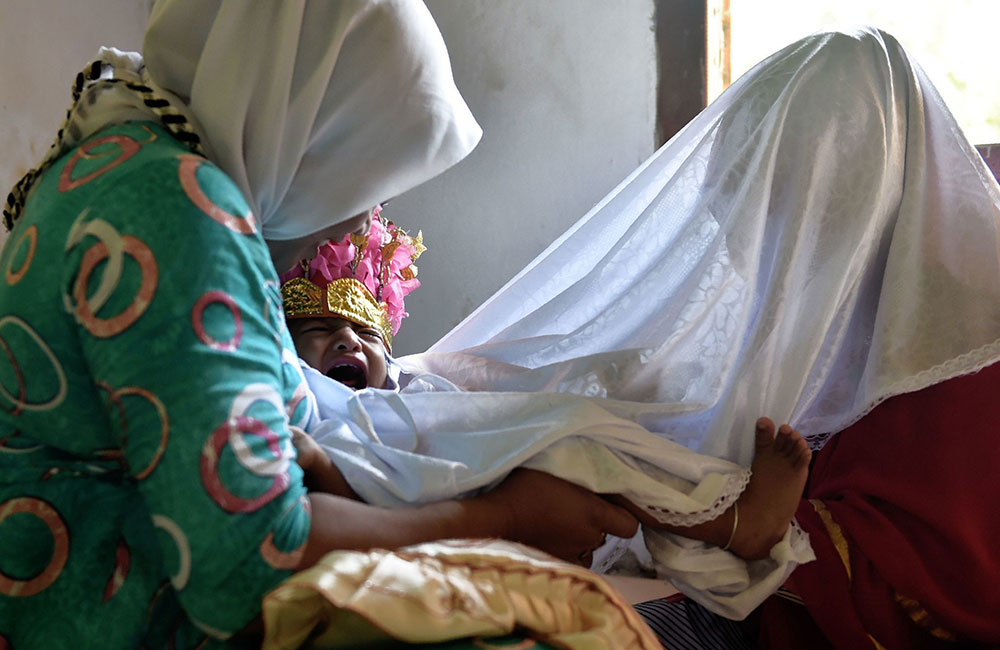
FGM in Sri Lanka: It's never 'just a nick'
by Zainab Ibrahim & Ermiza Tegal
For decades, female genital mutilation (FGM) has been practiced in Sri Lanka. However, to those outside the practicing communities, this information elicits shock and disbelief. Secrecy about FGM in Sri Lanka is both imposed and internalised. Women who have experienced FGM strongly fear retaliation for speaking out. There is a lack of freedom to discuss, question and explore alternative views within practicing communities.
In December 2017 a news story broke the public silence on FGM, opening a contentious debate. Spokespersons for some sections of the Muslim communities in Sri Lanka confirmed the practice of cutting but have taken pains to make a distinction between FGM and "female circumcision". They argue that what happens in Sri Lanka is "just a nick" of a girl's clitoris that does not constitute mutilation. This distinction is not recognised by the World Health Organisation ; the types of FGM it classifies include forms described as "just a nick".
 Female Genital Mutilation is practiced by a number of Muslim communities in Sri Lanka [Louise Gubb/Getty Images]
Female Genital Mutilation is practiced by a number of Muslim communities in Sri Lanka [Louise Gubb/Getty Images]
Based on personal testimonies of women, our work shows that FGM is practiced within the Moor, Malay and Dawoodi Bohra ethnic communities in Sri Lanka.
The practice appears to vary regionally, and there are clerics who denounce FGM, those who promote it, and also those that say it is mandatory. This means there are also sections of the communities abandoning the practice, with some reporting that FGM is diminishing with each generation and could possibly die out. Some women are opting to not get it done to their daughters or pretend to have it done to save face within their families and communities.
The form and conditions under which the genital cutting happens are varied. Moor and Malay women speak of a practice done at 40 days after birth by an "Osthi mami", a medically untrained woman who carries out the "ritual". Shaving blades are used and there is no mention of sterilisation. What exactly is nicked and how deep the nick is is left to the untrained "Osthi mami" to decide. Blood is drawn and sometimes ash is sprinkled on the wound.
Dawoodi Bohra women describe experiencing cutting at age seven, usually by medical professionals. Some have recounted traumatic memories of the procedure, of being pinned down on tables, feeling pain between their legs and feeling pain when passing urine for days after.
Some mothers have expressed regret with hindsight at having done this to their children. For others, it has strained their relationships with parents. A 27 year-old Sri Lankan woman who got herself medically examined as an adult, found part of her clitoris and labia had been cut when she was a child. Another woman testified to experiencing pain during sexual intercourse as an adult, due to nerves being exposed when she was cut as a child.
There is no established medical benefit, even of hygiene, that justifies the cutting of the clitoris or labia of young girls.
Proponents of FGM claim the WHO has not studied local practices, arguing that the local form of the practice somehow does not cause harm and, on the contrary, is beneficial - an argument for which no medical evidence has been presented.
It is hard to deny that the "local practice" involves interfering with the genitalia of a child who is unable to give informed consent. The clitoris matures to have a high concentration of nerve endings in a small piece of flesh. Given this, even if the clitoris is only minimally or accidentally injured, scar tissue develops and it can affect the ability of the woman to experience pleasure normally.

That FGM is done to control a woman's sexuality is well documented and echoes the narratives of Sri Lankan women we have spoken to between the ages of 25 and 60. These women have bravely testified to the lasting harm and trauma caused by their childhood experiences of being cut, despite great fear about the social and personal consequences of doing so.
Supporters of FGM have been loud and vehement. They are community gatekeepers who hold power and authority and are often male. Their insistence on the cultural practice is an attempt to trump the voices of women saying they have been hurt and don't want it done to any other child. There are also women who say the cutting has not affected them.
The latest argument of some proponents of FGM has been to say that the practice as described in the recently publicised excerpts of testimonies is not in line with the cultural practice they promote, and should in fact be "done properly". Their attempt to medicalise or regulate the practice would not undo the physical and psychological harm done to girls and women.
FGM proponents' debates on the methods and extent of cutting also distracts from the central fact that the practice of FGM is a violation of the rights of a child as protected by national and international law. The Muslim clerics in Sri Lanka who denounce the practice of cutting also highlight the issue of protection of children, along with their calls to respect the perfection of God's creation.
Women have started to speak up on the issue and have approached state authorities to lobby them to take action. FGM is a public health issue, but it is also a child abuse issue. Sri Lanka's Penal code criminalises any form of "grievous hurt" and genital cutting clearly falls within that definition. However, the women affected are calling for FGM to be recognised as a specific criminal offence. This will address the reluctance of law enforcement officials to take action on what they see as a private matter for families or a "cultural practice" of a specific community.
The pushback to women's advocacy raises important questions about whose voices we privilege in debates around cultural practices and women's bodies. While debate is a healthy process of exchange of information and views, vilification of and threats against women who raise the issue of FGM are simply attempts to silence them and must be condemned.
Women are reaching out for state protection because the problem of FGM is not an issue they are able to resolve within the community due to the overwhelming resistance from powerful interests that do not recognise their suffering. Banning FGM could help women resist harm to their daughters and protect the reproductive and sexual health of the future generations of women in Sri Lanka.
The views expressed in this article are the authors' own and do not necessarily reflect isis.lk's editorial policy.
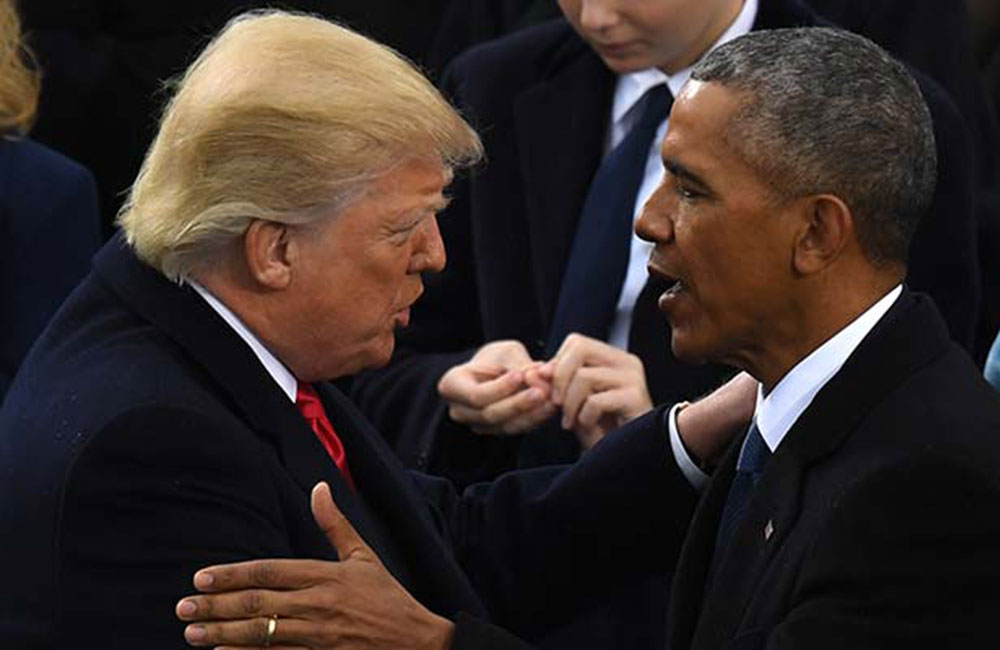
Here's How Both Barack Obama And Donald Trump Stoked The Saudi-Iranian Rivalry
By Ilan Goldberg
From the surprise resignation (then un-resignation) of Lebanese Prime Minister Saad Hariri to the intra-Gulf crisis with Qatar to the battle for influence in post-Islamic State Iraq and the vicious civil wars in Yemen and Syria, the signs of the regional battle royale between Saudi Arabia and Iran are everywhere.
This conflict has been escalating since the start of the Arab uprisings in 2011 and is driven by a combustible blend of geopolitical competition, religious sectarianism, and nationalism. While the United States is not the primary actor in this fight, it has an important role to play. President Barack Obama failed to de-escalate the conflict by trying to get the two sides to share. President Donald Trump's strategy of taking a confrontational approach with Iran while giving Saudi Arabia unconditional support has further exacerbated the situation. A policy that lies somewhere between these two extremes is more likely to succeed.
Rising regional competition
The rivalry between Iran and Saudi Arabia has long been a feature of Middle Eastern geopolitics, but the rivalry kicked into overdrive after the start of the Arab uprisings in early 2011, as security and political vacuums opened up across the region and the two rivals raced to support the various state and nonstate actors most amenable to their interests. When the uprisings began both sides felt insecure. Iran feared that the loss of its closest Arab ally, Syrian President Bashar Assad, would cut off its supply lines to Hezbollah and dramatically weaken its influence in the Levant. And Tehran saw the rise of the Islamic State in 2014, which came within 20 miles of Iran's border, as a national security emergency. But Iran also saw opportunities to undermine the current regional order to its advantage in places such as Bahrain, where the majority Shia population protested against the ruling Sunni royal family, and in Yemen, where Iran had relatively weak ties to the Shia Zaidi sect, but viewed instability and conflict as weakening and distracting Saudi Arabia.
The Saudis were also unnerved by regional events. The fall of Mubarak in particular rocked the Gulf monarchies, which saw the United States as abandoning a reliable but authoritarian partner and feared they could be next. They saw Iran's hand in much of the unrest and were particularly concerned about their own Shia minority in Eastern Saudi Arabia. But they also saw opportunities, especially in Syria, to overthrow Iran's closest ally, leading Saudi Arabia to actively support and arm Sunni opposition groups early in the conflict.
The end result has been that in the past seven years nearly every major conflict in the Middle East has had some flavor of Iranian-Saudi competition: the Syrian civil war, the war in Yemen, sectarian political competition in Iraq that ultimately led to the rise of the Islamic State, the Saudi-led intervention to crush protests in Bahrain, the execution of Saudi Shia cleric Nimr al-Nimr and subsequent sacking of the Saudi embassy in Tehran (followed by a break in Saudi-Iranian diplomatic relations), the Gulf Cooperation Council-Qatar break, and recent events in Lebanon. In most of these instances Iran-Saudi competition was not the initial spark that lit the fire. But by again and again choosing sides, taking a hard line, and providing money, weapons, political support, and sometimes intervening directly with their militaries, Saudi-Iranian competition has acted as the gasoline causing these conflicts to explode.
Nuke deal tension
Obama famously told the Atlantic's Jeffrey Goldberg that Iran and Saudi Arabia needed to learn how to "share." But unfortunately this approach failed to get either side to step back.
Obama chose to prioritize containing Iran's nuclear program, which was the right decision. A nuclear Iran would have dramatically escalated regional competition, causing Saudi Arabia to possibly respond with its own nuclear program. It would have created a dangerous nuclear competition between Israel and Iran, which would have made the Pakistani-Indian nuclear balance look deeply stable by comparison. The implications of Iran becoming a nuclear weapons state would have had global implications far beyond the Middle East for the sustainability of the nuclear non-proliferation regime.
Still, the Obama administration could have focused on the nuclear challenge while still doing more to counter Iran's actions in the region, especially in Syria where limited U.S. intervention years earlier might have led to a different outcome. Detractors argue that Obama actively ceded the Middle East to Iran because he did not want to jeopardize the nuclear agreement and saw Iran as a more reliable actor. This was not my experience when I worked the Iran issue in government. First, Obama was very clear about his concerns of getting sucked into a new conflict in the Middle East without a clear endgame. Much of his hesitance had little to do with worry about jeopardizing the nuclear deal but simply a function of his risk aversion and conviction that there were few good options. Moreover, parts of the bureaucracy spent a lot of time thinking about Iran's regional behavior, but for the most part these issues never made it onto the agendas of high level meetings because the president and his team were so focused on the nuclear issue it was hard to break through on these other important but secondary questions. In a normal government policy process issues that were not important enough to go to the top would instead be considered at lower levels, but since everyone knew how personally engaged the president was on the question of Iran no one dared to take action without high level approval, and the ultimate consequence was that many of these plans and ideas simply sat on the shelf. For a president who often liked to say, "we can chew gum and walk at the same time," this was an instance where the Obama administration failed to do that.
Iran responded to this American approach with a dual track strategy of its own. On the nuclear program it exercised restrain and ultimately pursued an agreement with the United States, preferring that outcome to crushing economic sanctions, international isolation, and the possibility of military conflict. But when it came to its regional support for surrogates and proxies, it continued to push forward and found little in the way of active resistance. The end result was an aggressive Iran in the region, though one that still valued the engagement that had begun with the Obama administration.
When it came to the Saudi Arabia, the question was not how to deter and counter a traditional adversary but instead how to encourage restraint on the part of a long-time ally. Here again the Obama administration was unable to impact Saudi calculus. The Saudis were deeply suspicious of the nuclear talks and viewed the nuclear deal as a possible opening gambit in an overall regional pivot by the United States away from Saudi Arabia and towards Iran. They viewed the Obama administration's restraint in responding to Iran's regional actions as part of this strategy. More fundamentally, the Saudi monarchy simply did not see the world the way Obama did. Where he saw layers of gray in the Middle East driven by multiple factors including fragile domestic governance, they saw a black and white situation where Iran was on the offensive everywhere. What he viewed as nuance and properly weighing risks they saw as hesitation and weakness.
This lack of trust in the United States led the Saudis to begin acting out more aggressively on their own out of a position of insecurity - arming groups in Syria, intervening in Bahrain, and most notably launching their intervention in Yemen. The United States tried to reassure Saudi Arabia through major arms sales, partial support for the Saudi intervention in Yemen, high level visits with very impressive delegations, and a comprehensive process to work together on regional security issues. But none of this could ultimately overcome the fundamental distrust the Saudis felt for the Obama administration.
Trump makes matters worse
The Trump administration has only exacerbated a bad situation dramatically escalating with Iran, jeopardizing the Obama administration's most important contribution to regional stability by attacking the nuclear agreement, and giving Saudi Arabia a green light to pursue aggressive regional policies.
On Oct. 13, Trump gave a provocative speech signaling a new confrontational approach to Iran. Unfortunately, the only meaningful policy action in the president's screed was calling into question the viability of the nuclear deal, which had at least for the foreseeable future put Iran's nuclear program in a box. But outside of that, the president's bluster about Iran's behavior has come with no material changes to U.S. policy in the Middle East. Instead, in Syria the Trump administration has focused on the Islamic State and negotiated with Russia over local de escalation zones that can hopefully lead to an end to the conflict, but have raised significant anxiety in Israel that the United States is on the verge of handing Syria to Iran. In Iraq, the Trump administration has realized that a major new confrontation with Iran would only put U.S. forces at risk. While the administration has talked tougher about pressing Hezbollah and cutting off Iranian arms shipments to Yemen, we have seen no meaningful actions nearly a year in to the new administration.
The result of this policy is an Iran that is even more unified and aggressive. During the Obama administration arguments by Iranian hardliners that the United States could not be trusted and would ultimately violate the nuclear deal had little resonance with the Iranian public. Today it is the consensus position. The Iranian leadership sees tough talk from the United States but little action, and so it continues its aggressive approach in the Middle East, most recently taking the eastern Syrian border town of Bukamal, which could be connected to Shia militia controlled areas in Iraq to give Iran new flexibility in moving its surrogates and proxies across Syria and Iraq . At the same time, this past week the Iranians put out a series of public announcements declaring victory over the Islamic State and taking credit for its defeat while blaming the United States and Saudi Arabia for supporting and building up the Islamic State in the first place.
When it comes to the Saudis, Trump and his son in law Jared Kushner have built an excellent relationship with the Saudi royal family - most importantly with Crown Prince Mohammed bin Salman. The president's visit in May was viewed by both sides as nothing short of a smashing success. It may be disturbing for many of us that this close relationship is based on Trump's ability to relate more easily to authoritarian rulers than democratically elected officials. Nonetheless, the depth of closeness and trust could be a valuable commodity if the United States could use it to deepen cooperation with Saudi Arabia on an effective strategy to counter Iran's regional actions.
But instead of positively influencing Saudi actions, what we have seen thus far is a perceived blank check from the Trump administration to Salman to pursue whatever policy he would like. Only two weeks after the president's visit in May, Saudi Arabia launched a blockade of Qatar that has distracted and divided the Gulf Cooperation Council and caused it to take its eyes off of more important U.S. priorities such as Iran and the Islamic State. And the recent Saudi move in Lebanon came only days after a visit by Kushner to the kingdom. In both cases Trump tweeted his support for Saudi actions before Secretary of State Rex Tillerson and Secretary of Defense James Mattis managed to walk him back, but the damage was done.
Trump's approach, like Obama's, is causing both sides to get more aggressive. The Saudis are now overconfident instead of insecure. The Iranians see Trump as impossible to deal with and confrontation with the United States and Saudi Arabia as the only option.
Finding middle ground
It is not too late for the Trump administration to shift to a strategy that can more effectively manage this escalating regional conflict. With Iran, the Trump administration should shift from a policy of all out confrontation to one of combining pressure and engagement in the region to reshape Iran's behavior. This was the approach the Obama administration successfully used to reshape Iran's calculus on the nuclear program.
This would require taking steps that counter Iran's interests in the region and coupling those with private and public messages to explain U.S. actions to set limits on Iran's activity. For example, the United States should more aggressively interdict weapons shipments going to Yemen or even consider destroying them. Rather than just quietly announcing such interdictions as we have done in the past, a highly publicized effort should be made to expose Iran's behavior and embarrass Tehran. As opposed to a quiet U.S. Central Command press release, imagine Mattis giving a press conference with interdicted Iranian weaponry in the background, sending a clear, tough message. In Syria, we should make absolutely clear that Iran must stay off of Israel's border in the southwest and be willing to take a hardline with the Russians or even signal that we would support Israel intervention if this line is not respected.
These types of meaningful steps should be coupled with clear, private messages to Iran laying out U.S. redlines. The purpose would not be to escalate with Iran, but instead create effective deterrence and set lines that Iran will not cross. This approach has worked in the past with Iran, when for example it pursued aggressive exercises in the Strait of Hormuz or when it started supplying weapons to Shia militias in Iraq that the United States found to be particularly threatening to its forces. In both those instances a tough message with targeted direct actions changed Iran's behavior, as it credibly feared a direct military confrontation with the United States.
This tougher approach should be coupled with a willingness to negotiate with Iran. At a minimum Tillerson should seek to reopen the direct bilateral channel that existed between former U.S. Secretary of State John Kerry and Iranian Foreign Minister Javad Zarif. This channel was critical in deescalating a possible crisis in Jan. 2016, when two American patrol boats inadvertently wandered into Iranian waters and were taken prisoner. And it is also a critical channel for being able to negotiate on issues such as Syria and Iraq, where Iran's acquiescence will be necessary in any final political settlement that stabilizes these countries and ends the conflicts in them.
With the Saudis, the administration should maintain the strong personal rapport that it has established. And it should use the tough steps it is taking against Iran as a reassurance to the Saudis that it means what it says. But it also needs to establish accountability by making clear that there will be no blank check for Saudi Arabia in the region. We can work together to counter Iran and we will certainly support the reform agenda that Salman appears to be pursuing. But we expect the Saudis to take steps to avoid a humanitarian crisis in Yemen by ending the blockade and being more flexible about entering a political process. And we expect them to consult with us before taking rash steps such as picking needless fights with Qatar or destabilizing Lebanon.
None of this will be easy, and deep animosity and regional competition between Iran and Saudi Arabia is here to stay for the foreseeable future. The United States cannot singlehandedly solve this problem or change the two sides' perspectives about each other. But it can pursue a policy that more effectively deters Iran and restrain Saudi Arabia from taking destabilizing actions detrimental to U.S. interests.
Source. Ndtv.com
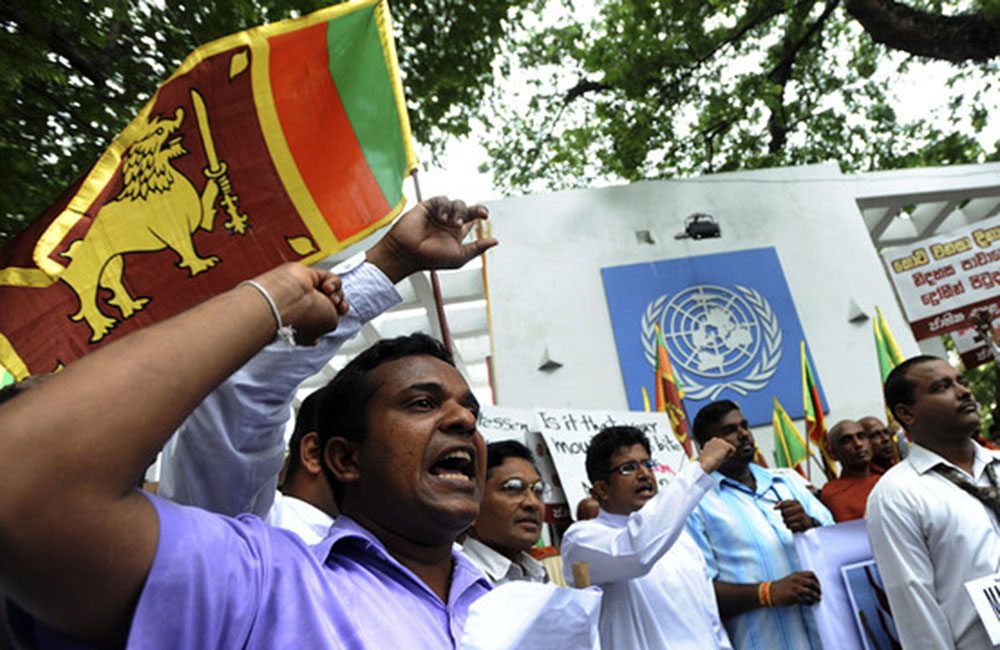
Why Is Sri Lanka Defying the United Nations?
Lately, Colombo has intensified its defiance of UN resolutions calling for investigations into war crimes committed during the latter stages of the civil war. In late November, Sri Lankan President Maithripala Sirisena declared that “There won’t be electric chairs, international tribunals or foreign judges. That book is closed.”
Earlier, in October, Colombo sought and obtained the help of British parliamentarian Lord Naseby to downplay a report by the UN Secretary General’s Panel of Experts, which in March 2011 found “credible allegations” that as many as 40,000 civilians may have been killed in the final months of the civil war, mostly as a result of indiscriminate shelling by the Sri Lankan military. Naseby had called on the UN to reduce the number from 40,000 to between 7,000 and 8,000 based on his own research.
Naseby’s links to Sri Lanka go back to 1975, when he founded the All-Party Parliamentary Group on Sri Lanka. Naseby has been an advocate for Sri Lanka in the British parliament and in 2005, was awarded Sri Lanka Ratna, the highest national honor bestowed upon foreigners for exceptional and outstanding service to the nation by the then Sri Lankan government. In November 2017, Sirisena thanked Naseby for calling for a reduction in numbers of the people killed. Although much has been made by the Sri Lankan press about Naseby’s call for a revision of the casualties, this has been summarily dismissed by the British government via its High Commissioner in Colombo.
Britain’s position is based on the Report of the UN Panel of Experts, comprising prominent human right activists, Marzuki Darusman (from Indonesia), Yasmin Sooka (South Africa), and Steven Ratner (United States). Unlike Naseby’s “findings,” the UN report has been corroborated by several other independent sources. These include: the Channel Four documentary Killing Fields, Francis Harrison’s book Still Counting the Dead, and reports by Human Rights Watch and Amnesty International.
Since 2012, resolutions calling for international investigation into alleged war crimes in Sri Lanka have been passed in the UN. Until 2015, these were opposed by Colombo on the grounds that international investigations were intrusive and, if implemented, would undermine Sri Lanka’s sovereignty. The Sri Lankan government during this period was the one that had successfully crushed the Tamil rebellion and the resolutions passed were directed in particular at this government, headed by president Mahinda Rajapaksa.
In January 2015, Maithripala Sirisena, with the support of the United States and India, defeated Rajapaksa in the presidential election. The new regime was expected to be more receptive to UN resolutions on post-war justice. In September 2015, a new resolution calling for an investigation into war crimes avoided any reference to an international investigation and in its place called for establishing a mechanism involving foreign judges in a local investigation. The Sirisena government went along by co-sponsoring this resolution. However, in March 2017, Colombo sought and obtained another two years to implement the 2015 resolution. But its current actions show that it has no intention of implementing the resolution. Instead, it seeks defy the very resolution it had co-sponsored in 2015.
There are good reasons to suspect that the Sri Lankan government’s opposition to any impartial investigation is due to its apprehension that it may result in Colombo having to face the much grimmer charge of genocide.
In February 2015, Sri Lanka’s Tamil-dominated Northern Provincial Council passed a resolution reflecting Tamil sentiments that the crimes perpetrated went beyond war crimes and were in fact genocide. Following this resolution, the Office of the United Nations High Commissioner for Human Rights (OHCHR) came under criticism for its “silence” on genocide. The Hindu, an Indian newspaper, was prompted to raise this with the OHCR, which responded by stating that the UN report does not preclude the potential for a future finding that genocide was committed as a result of further criminal investigations.
OHCR’s response was not entirely surprising. In December 2008, just six months before the Tamil rebellion was brutally crushed, the New York-based Genocide Prevention Project had identified Sri Lanka as one of the eight “red alert” countries where genocide and other mass atrocities were underway. And just two months later, in February 2009, the Boston Globe compared the ongoing massacre in Sri Lanka to the Bosnian Srebrenica genocide. Then there were the accusations leveled by Professor Francis A. Boyle, a leading American expert in international law, who interpreted the Sri Lankan government’s actions as genocide under international law.
In December 2013, a full session of the Rome-based Permanent Peoples Tribunal held in Bremen to consider evidence gained over three years found,”that the State of Sri Lanka is guilty of the crime of genocide against Eelam Tamils.”
Given the suspicions that Sri Lanka may well be guilty of genocide, this may be the reason for its concerted attempts to evade any kind of investigations into its conduct during the final phase of the war.
Ana Pararajasingham was Director-Programmes with the Centre for Just Peace and Democracy (CJPD). He is the author “Sri Lanka’s Endangered Peace Process and the Way Forward” (2007) and editor of “Sri Lanka: 60 Years of ‘Independence and Beyond’” (2009).
PIC: Wall Street Journal
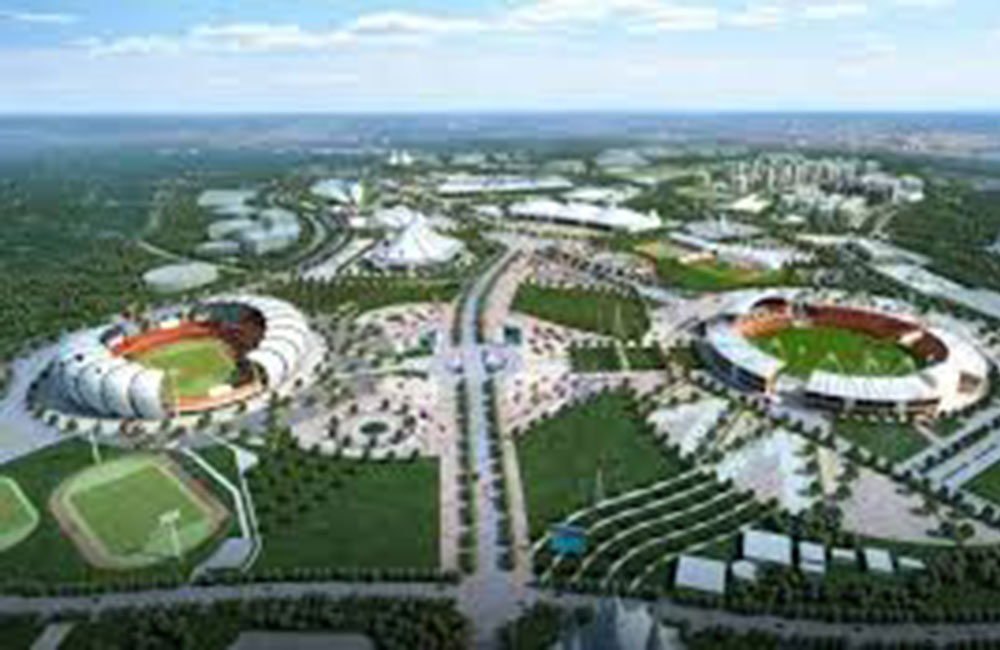
Sri Lanka, Struggling With Debt, Hands a Major Port to China
By Kai Schultz
Struggling to pay its debt to Chinese firms, the nation of Sri Lanka formally handed over the strategic port of Hambantota to China on a 99-year lease last week, in a deal that government critics have said threatens the country’s sovereignty.
In recent years, China has shored up its presence in the Indian Ocean, investing billions of dollars to build port facilities and plan maritime trade routes as part of its “One Belt, One Road” initiative to help increase its market reach.
Along the way, smaller countries like Sri Lanka have found themselves owing debts they cannot pay. Sri Lanka owes more than $8 billion to state-controlled Chinese firms, officials say.
Sri Lankan politicians said the Hambantota deal, valued at $1.1 billion, was necessary to chip away at the debt, but analysts warned of the consequences of signing away too much control to China.
“The price being paid for reducing the China debt could prove more costly than the debt burden Sri Lanka seeks to reduce,” said N. Sathiya Moorthy, a senior fellow specializing in Sri Lanka at the New Delhi-based Observer Research Foundation.
Sri Lanka has long been in India’s orbit, but its relationship with China has strengthened in recent years. As Western nations accused Mahinda Rajapaksa, the country’s former president, of grievous human rights abuses during the final stages of Sri Lanka’s nearly 26-year civil war, China extended billions of dollars of loans to Mr. Rajapaksa’s government for new infrastructure projects.
In July, the state-controlled China Merchants Port Holdings Company signed a deal with the Sri Lanka Ports Authority to control a 70 percent stake in the Hambantota port, which lies on the southern coast of the country.
Last Friday, Sri Lanka’s Parliament voted to grant tax concessions to a joint venture led by China to develop the port. On Saturday, the government completed the handover of the port to two state-controlled entities run through China Merchants Port Holdings, which has already made its first payment of $300 million to the Sri Lankan government.
“With this agreement, we have started to pay back the loans,” Prime Minister Ranil Wickremesinghe said in an address to Parliament. “There will be an economic zone and industrialization in the area which will lead to economic development and promote tourism.”
Critics said the lease could set a precedent for Sri Lanka and other countries that owe money to China to accept deals that involve the signing over of territory. After the original port deal was signed in July, Namal Rajapaksa, a member of Parliament and son of the former president, asked on Twitter whether the government was “playing geopolitics with national assets.”
Perceiving a threat to its regional hegemony, India has also watched with suspicion as cranes operated by Chinese firms began to dot the skyline in Colombo, Sri Lanka’s capital. To reset the imbalance, India has partnered with Japan to develop a port on Sri Lanka’s eastern coastline, and it has entered into talks to invest in an airport near Hambantota.
“India has been overwhelmed by China’s offensive in its strategic backyard,” said Constantino Xavier, a fellow at Carnegie India in New Delhi.
But across South Asia, there have been some signs of pushback to Chinese investment, including the recent sidelining of hydropower projects in Nepal, Pakistan and Myanmar.
Mr. Xavier said Sri Lanka’s dependency on China has alarmed some countries. “Countries in the region are beginning to realize the long-term costs of Beijing’s massive investment promises,” he said.
Source: Article was published in the New York Times on 13 December 2017
Pic: Getty Images
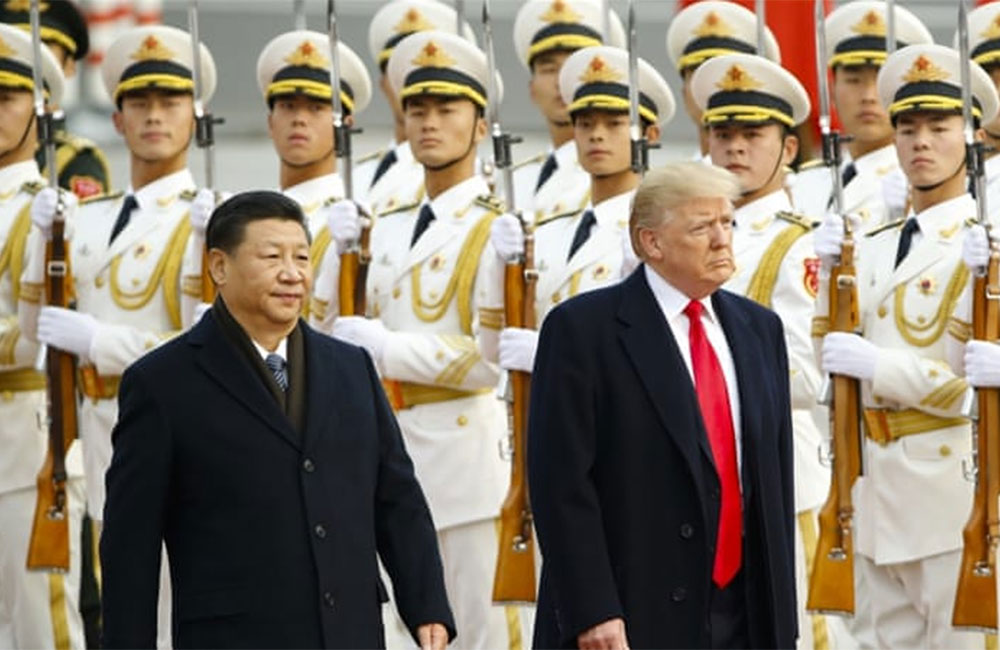
Xi's China rising, Trump's America waning
by Richard Javad Heydarian
20 Dec 2017
In less than a year in office, US President Donald Trump has managed to alienate more allies and provoke more enemies faster and more decisively than any of his predecessors in recent history. All of a sudden, we face the simultaneous threats of war from the Korean Peninsula to the Middle East.
Meanwhile, US' chief rival, China, has steadily expanded its influence across the Asia-Pacific region and beyond, wooing both the East and the West with an enticing package of economic mega-initiatives, which seek to transform the world in Beijing's image.
While Trump is picking fights with new and old adversaries, China is steadily expanding its spheres of influence. Day by day, it's becoming increasingly clear that the world is on the cusp of a post-American order, if not a new era of Chinese hegemony. And neither outcome is necessarily a cause for celebration.
China's soft power coup
From Europe to Asia, friends and allies of the US have been watching Trump's tempestuous presidency in dread.
His midnight rants on Twitter, incoherent policy on major geopolitical flashpoints, penchant for firing senior advisers, apparent Islamophobia, and constant berating of free trade and the broader international liberal order have dramatically undermined confidence in US global leadership. And controversial decisions by his administration have been increasingly alienating US allies.
According to one survey covering 37 nations in five continents, confidence in the US presidency doing the right thing for the international community has virtually collapsed; as many as 74 percent of respondents expressed little to zero confidence in Trump's global leadership acumen.
In major allied nations such as Japan and South Korea, 78 and 88 percent of respondents said they had confidence in Barack Obama in the last year of his presidency; for Trump, these numbers are now respectively 24 and 17 percent.
Washington's fickleness has eased in Beijing's charm offensive. China has courted even some of US' closest allies such as the Philippines.
And surveys show that a growing number of people, including in the Philippines, support their country's pivot to China amid doubts over American wherewithal and commitment.
With the Trump administration's aggressive rhetoric escalating over the past year, China has adopted a much more balanced and diplomatic stance on the world political stage. Beijing has opposed Trump's suggestions of decertifying the Iranian nuclear deal and his belligerent statements on North Korea. China has also openly rejected Trump's decision to recognise Jerusalem as the capital of Israel by emphasising the necessity for a two-state solution, where East Jerusalem becomes the capital of Palestine.
If the White House continues down the foreign policy path it has adopted in the first year of Trump's presidency, China will have a much easier time presenting itself as a non-interventionist superpower, which favours peaceful solutions to intractable conflicts, and perhaps even as a global arbiter.
China: The new champion of free trade
In a bizarre twist of events, Trump (a billionaire and former real estate magnate) has also become the new voice of economic protectionism and a chief critic of economic globalisation.
Throughout his international visits, including in Asia, he has called for "fair" trade and bilateral trade agreements, directly challenging the US century-old commitment to the global liberal order.
In response, the most powerful allies of the US, including Japan, Australia and Europe, have pushed ahead with alternative trade arrangements which directly bypass Washington.
In stark contrast to Trump's rhetoric, communist China has presented itself as the new vanguard of the international economic order.
During his speech at the Asia-Pacific Economic Cooperation summit in Vietnam in November, Chinese President Xi Jinping called for "more open, more balanced, more equitable and more beneficial" global trading arrangements, praised proposed and existing "multilateral trading regime[s]" and underlined the necessity for "practice[ing] open regionalism."
While Trump unilaterally nixed the US-led Trans-Pacific Partnership Agreement, China supported alternative trading arrangements such as the Regional Comprehensive Economic Partnership Agreement, which covers 16 nations across the Asia-Pacific region.
China has doubled down on its economic influence by launching the trillion-dollar One Belt One Road Initiative earlier this year, a mega-project that aims to connect Asia to Europe and Africa via a new network of Beijing-funded roads, railroads and shipping lanes. The message is clear: Where the US offers criticism and threats, China offers investments and hope.
Will China be a better hegemon than the US?
The emergence of China as a new pillar of the international order isn't necessarily a cause for celebration.
For a reality check, one must take a sober look at Beijing's limited respect for human rights and democracy, support for oppressive and dangerous regimes, mixed record on the success of its investments across the developing world, territorial assertiveness and direct challenge to international norms and laws, as well as increasing interference in the affairs of smaller nations.
From Asia to Africa and Latin America, a growing number of developing countries have found themselves drowning in unsustainable debt, thanks to white elephants built by Chinese infrastructure companies.
Unable to settle their debt and optimise mal-designed infrastructure projects, poor nations have been forced to grant Beijing full stake in their critical infrastructure and resources such as seaports (Sri Lanka), major public land (Laos), and natural resources (Venezuela).
China hasn't behaved as belligerently as the US (yet), but there are enough reasons to cast doubt on the long-term designs of the Asian powerhouse in the developing world.
The American bully may be on its way to permanent decline, but it is likely successor is far from reassuring.
Source : Al Jazeera
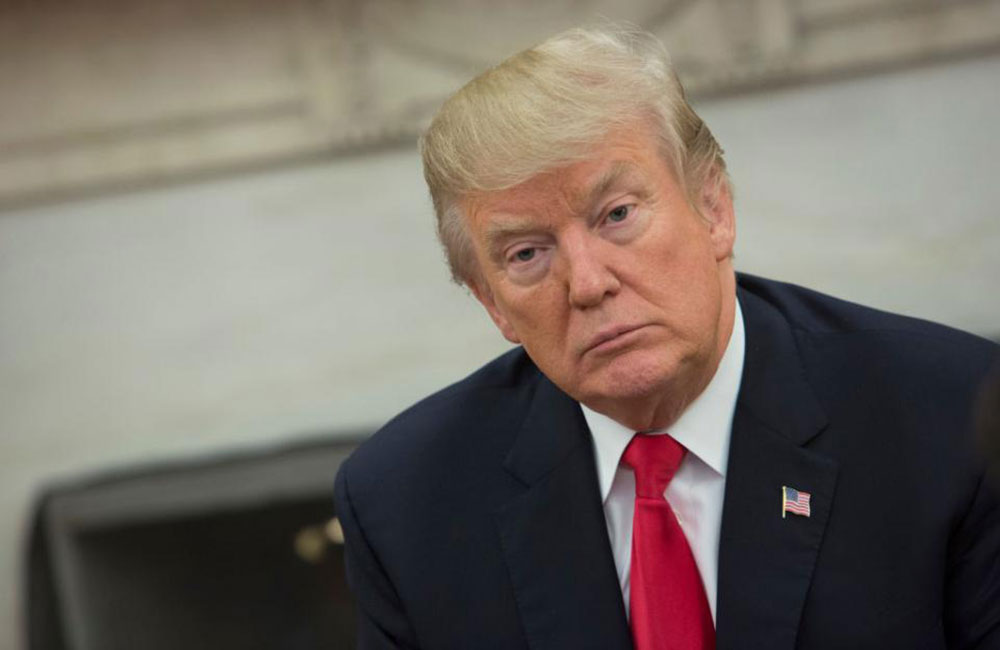
Trump's global credibility is shot
By Frida Ghitis
December 7, 2017
(CNN) : No, the entire world is not obsessed with Donald Trump, but you have to travel far to reach a place where people are not following closely -- and worrying deeply -- about what's happening in Washington.
I travelled some 10,000 miles across continents and seas to Sri Lanka and then drove another eight hours away from the capital, Colombo, among rice paddies and coconut palm farms, to the island's war-scarred Northern Province before I found people who had little interest in America's unusual president and his policies.
I must admit, after months of a Trump-heavy news diet, it was starting to look at the morning newspaper and see an entire front page without a single mention of the word "Trump."
Before driving off to the provinces, I scanned the bustling skyline of Colombo, with its multiple, ambitious projects, many of them built, financed and largely owned by China, which sees in this country a strategic point of influence in its expanding global footprint. It's hard to avoid the impression that while Americans are understandably focused on what's happening at home, the rest of the world is moving fast to make gains on the distracted superpower.
And yet, it's not only Americans who are fascinated with US politics. A year ago, as I informally surveyed people in a number of countries about the US election, Sri Lanka was the only place where I found Trump supporters. But what about now?
Along my way to the north, Suranga Fernando, who lives in the town of Negombo, not far from Colombo, commented, "Trump is crazy, no?"
And Fernando isn't alone in his sentiment. The troubling phenomenon is far-reaching. Pew research surveyed 37 countries and found a widespread collapse of trust in the US president and in the United States. A median of just 22% said they have confidence in Trump to do the right thing in world affairs, a jaw-dropping collapse from the 64% who trusted the US president at the end of the Obama presidency.
A stunning 74% said they have little or no confidence in Trump, up from just 23% who didn't trust Obama. Mistrust in the US leader extended to confidence in the United States, with favourable views of the United States plummeting around the world from 64% to 49% since Trump became president.
The President's Wednesday announcement that the United States would now acknowledge Jerusalem as the capital of Israel isn't likely to improve his ratings. Allies across Europe and the Middle East -- from the United Kingdom to Saudi Arabia -- warned Trump against it. And yet, Trump ignored them, choosing to make an announcement they said would prove harmful.
And though Sri Lanka wasn't included in the Pew survey, I found many Sri Lankans shared similar concerns to Fernando's. In Jaffna, the North's capital, Jathu Jathurshan, a local businessman, told me he hasn't made up his mind about Trump, but he worries, especially regarding North Korea. "The way he's talking is not the proper way," he said, "I think he wants a war."
In a country divided by ethnic and religious differences, some value Trump's strong words against Muslims and his vow to defeat terrorists. Rukshan Kasthuri, a marketing expert, admires Trump's own marketing prowess, which led to electoral victory, and he likes Trump's goal to "eradicate Muslim terrorists from the world." But Kasthuri admits he has not heard about the Russia investigation or the controversial tweets that came after the election. Others have.
But Trump's reposting of racist anti-Muslim videos last week made an impression in a country that endured nearly three decades of a civil war pitting the separatist terrorist group known as the Tamil Tigers, mostly-Hindu and ethnic Tamil, against forces of the central government, mostly Buddhist and ethnic Sinhalese, a conflict whose full tally will likely never be known. Some detailed accounts put the number of dead above 100,000 even before the final government offensive, which the United Nations says left another 40,000dead.
Writing in Sri Lanka's prominent Daily Mirror, Ahilan Kadirgamar, a Tamil activist and researcher, described the "lunatic tirades of Trump," along with the rise of nationalism in Europe, and the muscular projects of China as a warning sign. "Nationalism requires an enemy," he noted, as Sri Lankans have seen, with "disastrous consequences."
Gehan Gunatilleke, a Sri Lankan human rights lawyer and research director at Verité Research, an independent Sri Lankan think tank, told me Trump's retweet of the racist videos "amounts to advocacy of racial/religious hatred," adding that "the Trump presidency has delegitimized the US among Sri Lankans in an unprecedented way."
Observers here are weighing the implications of Trump's words. Harinda Vidanage, director of a local think tank, says Trump is "systematically undoing" the achievements of a liberal world. His feud with the United Kingdom after posting the vile videos undermines the until-now impregnable "special relationship" between the United States and Britain. As a result, he said, countries that had relied on the United States will "rethink or even recalibrate their own alignments." Trump's "scathing attack on its ultimate friend," he notes, "harms the United States and its global standing." And news of Trump's tweets of false information is travelling the world.
The Dutch quickly rejected Trump's tweet of a video that was supposed to be a Muslim attacking a Dutch boy on crutches. "Facts do matter," said the Dutch Embassy. The attacker was not Muslim. He was born and raised in the Netherlands, and was arrested over the attack.
Brazil's O Globo, in multiple articles, said plainly that the President of the United States tweeted videos with false information, "inciting prejudice against Muslims." A similar message spread in the rest of the continent and beyond.
In India, just north of Sri Lanka, the tweetstorm, including Trump's aggressive retort against British Prime Minister Theresa May, received widespread attention. Trump, explained the Hindustan Times, stoked the same anti-Islam sentiments he had fanned during the campaign, turning away from important items of his agenda (including North Korea) to promote videos from a British hate-monger.
Does it matter that far-away nations are looking at the American President, noting his assaults on the truth, on the media, on his allies -- and on tolerance and coexistence?
Without a doubt, it does. It matters that nation-states now view the United States as an increasingly unreliable country, with an untrustworthy president. That emerging image of America will affect US influence in the world, eroding its strategic positing and diminishing the strength of American values, weakening those fighting to create more democratic societies where they live and simultaneously strengthening the hand of America's authoritarian rivals.
Consider Nigeria, pondering whether it should ally itself economically, strategically and politically with a rising China or with the US.
The words and actions of an America president are working their way across vast distances, slowly seeping across oceans, jungles, languages and cultures. Trump may claim people now respect America, but the truth is very different. The more people hear about a president who promotes discord and distorts the truth, the less they respect and trust the United States.
Pic Source : Newsweek
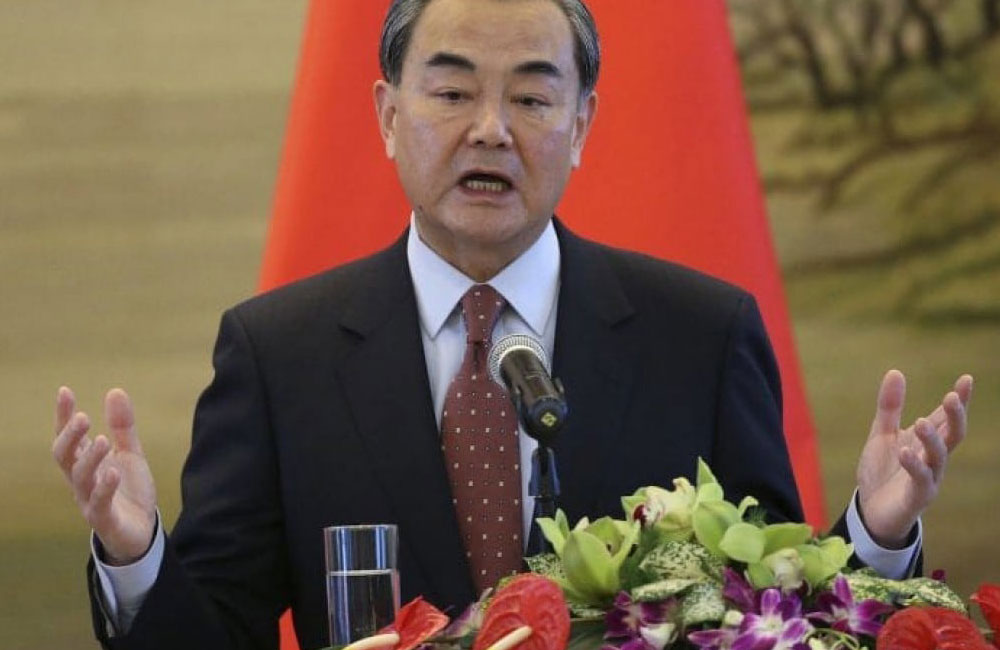
The global backlash against China is growing
By John Pomfret
A global backlash is brewing against the People’s Republic of China. In Australia, China’s efforts to use surrogates to funnel money into the Australian political system led one senator to quit last week, and has prompted the government to unveil a series of laws to crack down on foreign influence. In Europe, alarm is growing at Chinese mercantilist practices and China’s desire to snap up European firms with innovative technologies. In the United States, the business community, long the ballast in America’s relations with China, is no longer united over the issue of how to pursue relations with Beijing. Many American firms have suffered losses in China.
As a result, a slew of other issues — such as China’s industrial espionage, its demands for forced technology transfer, its use of Chinese state-run media to broadcast pro-Beijing propaganda in the United States and its attempts to influence U.S. educational institutions — is prompting calls for a response. Already, Chinese firms seeking to buy American high technology are facing more difficulties. And there’s talk in Congress of forcing China’s state-run TV and wire service operations in the United States to register as agents of a foreign power.
This backlash is coming at a time when Beijing has expressed unprecedented confidence in its economic and political model, which combines the dictatorship of the Chinese Communist Party with an industrial policy that aims, through subsidies, massive government-backed research and development, and the acquisition of Western technology, to ensure that Chinese firms dominate the economy of tomorrow. Starting in July 2016 at a celebratory speech marking the 95th anniversary of the founding of the Chinese Communist Party, China’s President Xi Jinping began to use a term, the “China solution,” to assert that China had found what he called a “solution to humanity’s search for better social institutions.” The term has since gone viral in China and has been picked up by Chinese communist theoreticians as an idea to counter Western influence around the world. As a writer for the party’s mouthpiece, the People’s Daily, put it on Dec. 6, the China solution “transcends ‘Western centrism’ and greatly stimulates the development of the broad range of developing countries’ self-confidence in ‘going their own way.’ ”
The backlash is also building as many in the West worry that China is winning a global competition for resources, market share and ideological influence. Around the time of President Trump’s summit in China in November, the American press was full of hand-wringing that China was outpacing the United States in the race for global leadership. “Why China won 2017 and how Donald Trump helped them do it,” read the headline from CNN’s website on Nov. 3. “China won” was how Time magazine framed a cover piece by the political analyst Ian Bremmer. USA Today has piled on, too.
Interestingly, the growing negative reaction to China’s rise belies reports that the United States under Trump is no longer capable of cooperating with America’s traditional allies. In recent weeks, the Trump administration has joined with the European Union in rejecting China’s claim that, under the terms of its accession to the World Trade Organization, it should be granted market-economy status, which would protect China from anti-dumping duties. At the WTO ministerial meetings in Buenos Aires last week, the United States, the European Union and Japan confronted China over its unwillingness to scale back its industrial production and other questionable trade practices.
During his trip through Asia in November, Trump began using the term “Indo-Pacific,” and not the Asia-Pacific, as a way to signal the region of a U.S. intention to include India in the United States’ attempts to balance China’s growing military and economic heft. On the sidelines of the East Asia Summit in Manila, U.S. officials met with counterparts from Australia, Japan and India, reviving what has come to be known as “the Quad,” a loose association of the four maritime democracies worried about China’s rise.
In addition, the widely perceived impression that Trump’s election has resulted in a weakening of U.S. influence has also prompted countries in Asia to continue to hedge their bets against China without the United States. No sooner had he entered the Oval Office than Trump pulled the United States from the Trans-Pacific Partnership, a trade pact grouping 12 nations that border the Pacific. That move was supposed to spell the end of the TPP, but it did not. Concerned that the pact’s demise would allow China to dictate the terms of economic relations in Asia, the 11 remaining nations continue to move forward on a deal. In addition, bilateral relations between Asia’s democracies remain robust and are improving. Japan has played an important, if not the critical, role in encouraging India to increase its influence in Asia. Japan helped coordinate a summit in New Delhi between India and members of the Association of Southeast Asian Nations, which focused on how India could help those nations rely less on Beijing for trade and investment.
The pushback against China is not confined to democracies. Even nations with historically close ties to China have begun chafing at the high-handed treatment emanating from Beijing as part of China’s “One Belt, One Road” infrastructure program. While China has attempted to package the program as a Chinese version of the Marshall Plan, increasingly it’s being received as something more akin to Western colonialism than Western largesse. Sri Lanka currently owes Chinese state-controlled firms more than $8 billion. As part of a plan to break free of its debt trap, last week, the government handed over the strategic port of Hambantota to China on a 99-year lease, in a move that critics said would threaten the country’s sovereignty. In India, pundits referred to China’s move as “debt-trap diplomacy.” Even Pakistan, perhaps China’s closest foreign partner, seems to be having second thoughts about taking Chinese money. Express Tribune, a Pakistan newspaper, reported that the government had canceled a $14 billion dam project after Beijing made it clear that it wanted to own the dam after it built it. Nepal announced that it, too, was canceling a deal on a Chinese-funded dam for similar reasons.
So far, China’s reaction to the growing concern about China’s power has tended toward the aggressive. In Australia, the Chinese Embassy warned Australian government officials not to damage “mutual trust” as they moved to pass laws aimed at protecting Australia’s political system from foreign money. After Australian Prime Minister Malcolm Turnbull noted “disturbing reports about Chinese influence,” the embassy cautioned Australian officials not to make “irresponsible remarks.” The embassy also accused Australian media outlets of fabricating news stories about “the so-called Chinese influence and infiltration in Australia.”
For decades, successive administrations in Washington have worked for a stronger China. But now that China is stronger, the United States, along with many other countries around the world, is no longer so sure that’s what it wants.
John Pomfret, a former Washington Post bureau chief in Beijing, is the author of “The Beautiful Country and the Middle Kingdom: America and China, 1776 to the Present.”
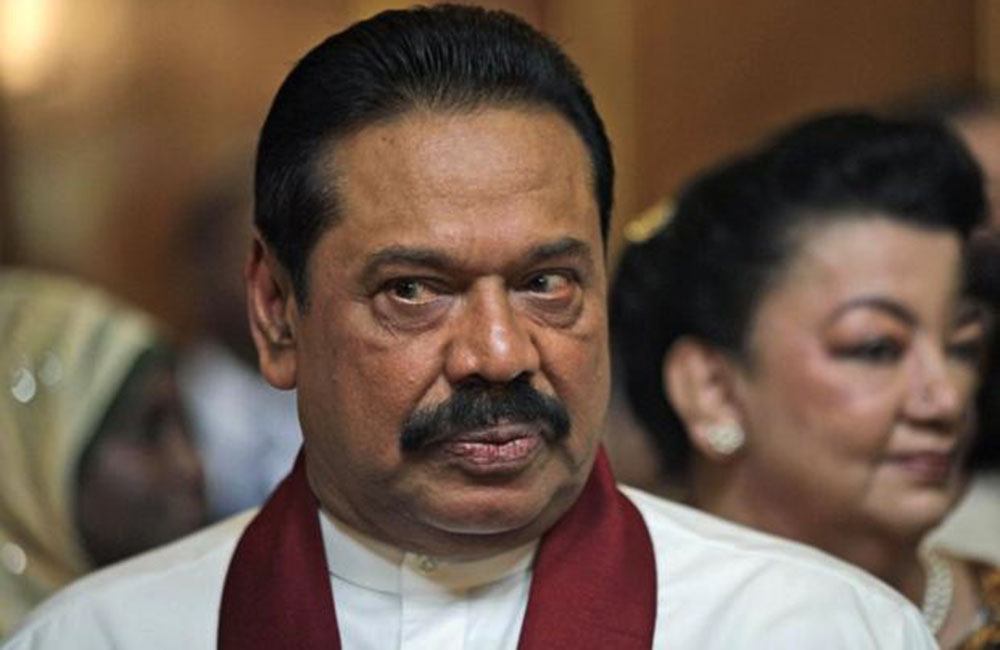
Mahinda Rajapaksa: The Man Who Would be Sri Lanka’s President
By Peter Wollweber
08 December 2017
A new day, and the sun rises over Mattala Rajapaksa International Airport. A tourist might be greeted by any number of sounds; the dawn chorus of tropical birds, palm leaves rustled by the breeze, or the gentle spray of a fountain. One thing is for sure: there won’t be any planes. The commercially disastrous airport lies in the middle of the Sri Lankan jungle, for no other reason than the ambitious personal project of former president Mahinda Rajapaksa to develop his home town into the economic centre of the Indian Ocean. Here, the shadow of the Rajapaksa regime, an administration that ended the country’s bitter civil war, quite literally hangs over the region. The man himself was ousted in 2015 after a surprise election defeat, but the Rajapaksa dynasty still dominates Sri Lanka today, and despite the government’s best efforts, will not be fading into the background anytime soon.
In order to understand the current situation, however, it is useful to look back at Rajapaksa’s time in office. He rose to power with the centre-left Sri Lanka Freedom Party on a pledge to defeat the Tamil Tigers (LTTE), and thereby end the drawn-out civil war mainly taking place in the north of the country. This he did, but has since been dogged by war crime allegations and gained the enmity of many of the ethnically Tamil regions. Other priorities during his tenure were mainly infrastructure projects such as Mattala Rajapaksa Airport and its US$1.5bn partner, Mahinda Rajapaksa Port. The port is famously devoid of shipping to the extent that the current government has been forced to lease the entire facility to the Chinese. Having brought to a close the civil war that defined the country since the 1980s, Rajapaksa comfortably won the 2010 presidential elections, embarking on a second term. Aiming to repeat this success in 2014 following a constitutional amendment relaxing the rules on re-election, Rajapaksa found himself challenged unexpectedly by Maithripala Sirisena, his own former health minister. Pledging to curb presidential powers and investigate misconduct in the civil war, Sirisena achieved a shock victory with the support of Tamil regions. Far from consolidating his presidency, Rajapaksa’s gamble backfired and he now found himself out in the political wilderness.
Yet two years later, Mahinda Rajapaksa and his family still matter in Sri Lanka. Sri Lanka is a country made up of ethnic divisions, deepened by the civil war. Just as the Tamils flocked to vote for Sirisena, the majority Sinhalese south are largely through-and-through Rajapaksa loyalists. To them the end, victory over the LTTE, was worth the disputed means. And the seeds of a Rajapaksa comeback have already been sown. Unlike any previous president, he won election to the Sri Lankan parliament after his defeat. It is a clear indication that his ambitions have not yet been satisfied, or perhaps that he intends to throw a spanner in the works of Sirisena’s regime, who are attempting to fulfil their pledge on war crimes.
But why worry? The continued political involvement of a former president would hardly be a concern. To see what is at stake, it is once again necessary to look back at his tenure. Rajapaksa himself held four separate ministerial positions whilst president. Two relatives held deputy and non-cabinet positions from 2005, the administration’s inception. But later on, in 2007 and 2010 respectively, two more members of the Rajapaksa clan were introduced and given full ministerial briefs, leaving the family in charge of ministries such as Economic Development, Finance and Planning and Highways, Ports and Shipping. Projects like the MRIA therefore acquire a new significance, not just a symbol of Rajapaksa’s struggling economic initiatives but a concrete and steel sign of the power his family wielded over the small, strategically important island.
Power that has undeniably abated, but shows definite signs of returning. Rajapaksa is aware that he retains a large following. Moreover, cracks are beginning to appear in the Sirisena government. The president appears to be undecided regarding war crimes allegations, declaring in 2016 that he would not allow a single soldier to be brought to trial, but hinting on November 12th that some prosecutions could indeed be made. Sirisena’s professed anti-corruption drive seems to be almost devoid of media attention, making his government increasingly easy game for a resurgent Rajapaksa.
And the former president appears to be well aware of this. Rajapaksa, for all his faults, understand the political process like few of his rivals. He practices the art of charisma to near perfection, and his public profile remains high. It is considered that he still commands the loyalty of 55 MPs in the SLFP, more than the president can muster. It seems the man himself is perfectly positioned to wait out Sirisena’s government, pledged to solve the transparency problem of a country that, a year into his ‘regime of good governance’, still occupied 95th place on the Corruption Perceptions Index. Sirisena’s targets are, in a country still recovering from civil war, nigh-on unattainable, and it is only a matter of time before one of two situations arises. The first is that Sirisena will find himself in another presidential runoff against Rajapaksa, only this time with a difficult record to defend and lacking the element of surprise that allowed him to carry the election in 2015. The other scenario is that a weakened Sirisena, remaining president into the next term, may be forced to appoint Rajapaksa prime minister to stabilise his own government. The prime ministerial role was even strengthened by Sirisena as part of his curb on presidential powers. Either situation, with or without Sirisena, looks positive for his rival.
The final question to ask is what could be expected of a Rajapaksa return. Domestically it would almost certainly mean heavy investment in his Sinhala heartland, and an end to the war crimes probe that has dogged members of his own administration. Corruption investigations would likely also be ended, especially since Rajapaksa’s own brother Gotabaya is one of the most recent victims. The most important consequence would be further political instability as Rajapaksa attempts to entrench his dynasty, in a region in which China has shown steadily increasing interest over the past few years. The Chinese invested heavily in the Rajapaksa regime, and its return would be a geopolitical coup for them. Companies owned by the Chinese government already hold a commanding stake in Mahinda Rajapaksa Port, and a pro-Chinese Rajapaksa would be keen to further work on the ‘Maritime Silk Road’ of which Sri Lanka is a central component. The implications of a Rajapaksa return would therefore reach far beyond Colombo, eroding Indian influence in south Asia and bolstering the economic and political hand of the Chinese. In a region that is already the centre of a strategic game of chess between China, India and the West, it is high time the global media recognised its significance.
Source: http://foreignaffairsreview.co.uk/2017/12/mahinda-rajapaksa-the-man-who-would-be-sri-lankas-president/
Page 4 of 5